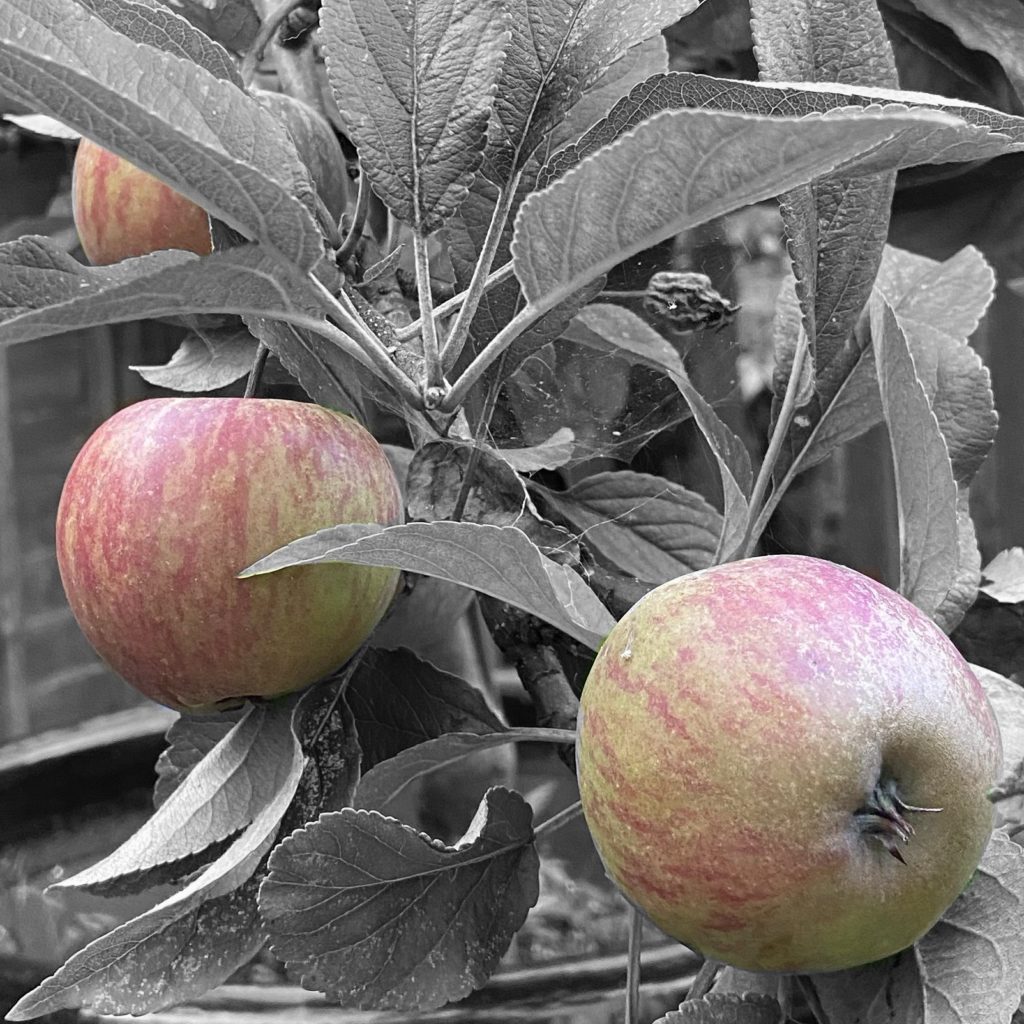Is the green apple quicker than the red? Does the green develop faster? Neither are very good questions without a context. That context is a potted apple tree that sits on our back deck. It’s been yielding green apples for over a month. Originally a gift, it’s been there about eight years and this is the most abundant yield to date. It’s an unusual apple tree in that there are two varieties grafted together. Two isn’t so many given the 250 that were in the news back in 2013. But two is enough for us.

It’s sat there for years, the apples generally uneaten because of a rat. We had no idea that there was a rat’s nest under the shed at the bottom of our garden until I spotted a rat running towards the shed. The rat’s gait was unusual, more staggering than run. I was seeing it from behind and could never have guessed what was happening.
In short, the next day, I thought I spotted a squirrel in the apple tree. We had noticed that apples were disappearing and that one or two had bite marks. So the idea of catching a grey squirrel at work was annoying but more way acceptable than discovering a foraging rat. And foraging rat it was.
The staggering gait was there again as she made her way down the tree (which is only a metre and a half tall), across the deck and then ten metres over flagstones and in, under the shed. She had taken two apples, pouched and carried, one in each cheek. The sight of this hugely bloated rat head evoked sympathy in me and horror in the rest of the family. The fear of rats starts with bites and plague and extends to hantavirus, leptospirosis, lymphocytic choriomeningitis, Tularemia and Salmonella.
It’s been four seasons since that rat stripped every last apple from the tree. This is the first year anyone has had the confidence to eat our own home grown apples. And to date, all of this season’s apples have been slightly tart greens. Not one red yet ripe enough to fall.
Some say there are 7,500 varieties of apples around the world. Which is about the same number of languages. All I know is that I can ripen unripe fruit like avocados and tomatoes with just one apple together in a paper bag. I guess it’s because a ripening apple is respiring the hormone ethylene as a pheromone which accelerates the browning of bananas and other fruits in our fruit bowls.
Ethnologue records that there are some 7,000 languages in the world, more or less an apple a language. Their site even has a language of the day, every day. Today’s language was Mo. I don’t subscribe so all I can say is that it’s language ISO 639-3.
Here’s how to ‘wash your hands’ in a few languages you might recognise:
Помойте Ваши Руки (Useful in Moscow?)
Lávese las manos (Madrid?)
Nigh do lámha (Galway perhaps)
手を洗いなさい (Tokyo?)
ხელები დაიბანე (I’ve always liked the Georgian script.)

Leave a Reply